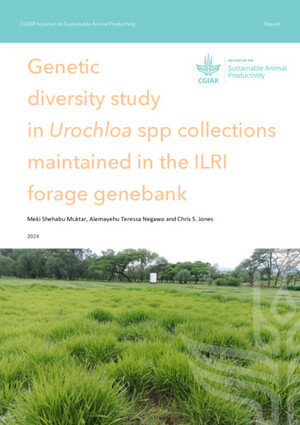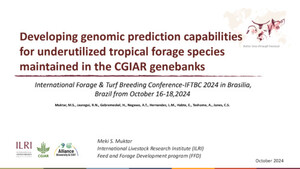
Methane and nitrous oxide emissions from cattle excreta on an East African grassland
Abstract
Greenhouse gas (GHG) emission measurements from livestock excreta in Africa are limited. We measured CH4 and N2O emissions from excreta of six Boran (Bos indicus) and six Friesian (Bos taurus) steers near Nairobi, Kenya. The steers were fed one of three diets (T1 [chaffed wheat straw], T2 [T1 + Calliandra calothyrsus Meissner – 0.2% live weight per day], and T3 [T1 + calliandra – 0.4% live weight every 2 d]). The T1 diet is similar in quality to typical diets in the region. Calliandra is a leguminous fodder tree promoted as a feed supplement. Fresh feces and urine were applied to grasslands and emissions measured using static chambers. Cumulative 28-d fecal emissions were 302 ± 52.4 and 95 ± 13.8 mg CH4–C kg−1 dry matter for Friesen and Boran steers, respectively, and 11.5 ± 4.26 and 24.7 ± 8.32 mg N2O–N kg−1 dry matter for Friesian and Boran steers, respectively. For urine from Friesian steers, the N2O emissions were 2.8 ± 0.64 mg N2O–N 100 mL urine−1. The CH4 emission factors (EFs) (246 ± 49.5 and 87 ± 12.7 g CH4–C yr−1 animal−1 for Friesan and Boran, respectively) were lower than the International Panel on Climate Change EFs (750 g CH4–C animal−1 yr−1), whereas the N2O EFs (0.1 and 0.2% for the Friesian and Boran feces, respectively, and 1.2% for urine) were also lower than International Panel on Climate Change estimates. The low N content of the excreta likely caused the low emissions and indicates that current models probably overestimate CH4 and N2O emissions from African livestock manure.
Citation
Pelster, D.E., Gisore, B., Goopy, J., Korir, D., Koske, J.K., Rufino, M.C. and Butterbach-Bahl, K. 2016. Methane and nitrous oxide emissions from cattle excreta on an East African grassland. Journal of Environmental Quality 45(5):1531-1539.










